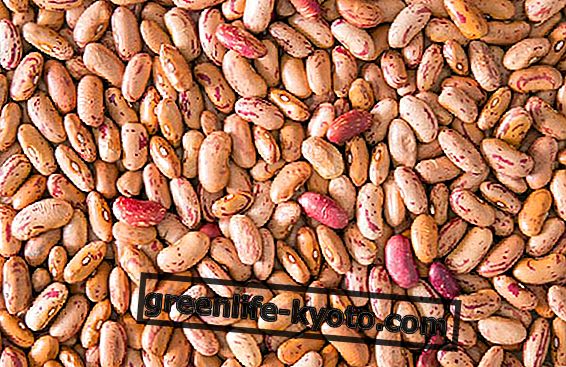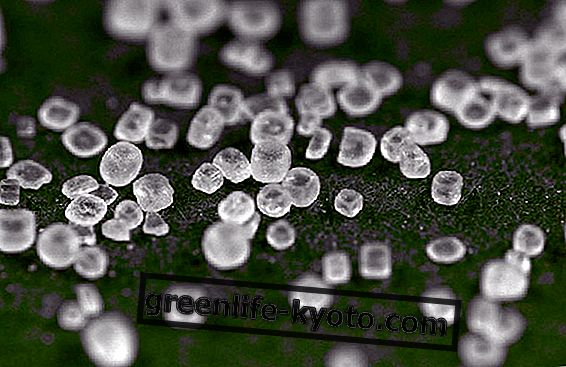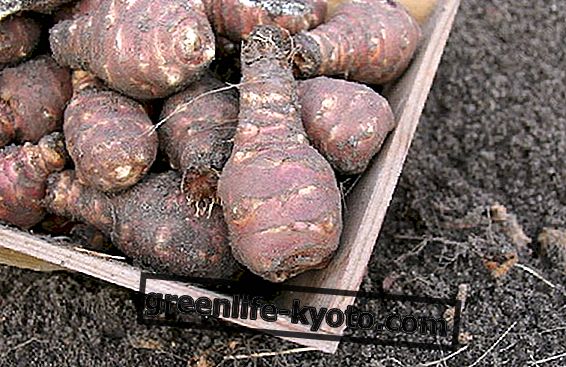
The bean belongs to the legume family or fabacea and is a plant native to Brazil and Argentina. Already 7000 years ago in South America the bean was known and only after the journey of Christopher Columbus this plant was also introduced in Europe.
The scientific name of the bean is haseolus vulgaris but there is also another species of original bean instead of the African lands its scientific name is Vigna unguiculata .
This last bean is also known as the eye bean and has been cultivated in Europe since ancient times before the discovery of America and the importation and spread of Phaseolus vulgaris or American bean.
Both plants, however, have the same climbing habit, the same cultivation requirements and usually have an annual cycle . They like to grow in moist soil rich in organic substance and they do not grow well in too compact soils rich in clay or calcareous.
Bean variety
The bean varieties are really many and we can count more than 300 different types among which, however, only about sixty is edible. Variety and sub-varieties instead are cultivated in hundreds, all different in size, color, shape, maturation speed, number of beans in the pod, preferable use (raw, cooked or preserved).
Borlotti beans

Borlotti beans are the best known and most sold in Italy . They belong to the selection of American beans imported from South America which, however, over time has found an excellent climate in Italy so much that today we have many varieties of borlotti beans typical of Italy such as the Vigevano borlotto.
The characteristic of these beans is the beige color which tends to rosé and on the skin appear darker blobs of a color similar to the rust between the reddish and the brown color .
There are also varieties called borlotti tongue of fire that has bright, bright red streaks on the skin. The main use of borlotti beans is in the preparation of soups, velvety, soups and even alone in salads.
The borlotti beans are very appreciated for their ability to absorb the flavors of the foods that are cooked together and this is the main factor that sees the borlotti in numerous traditional recipes of our Italian cuisines among rustic soups, pasta with beans and pork rind with borlotti . The harvest time is between June and September although we can buy them all year round dried or stored in boxes.
Cannellini beans

Cannellini beans are another well-known variety of beans and their shape is more cylindrical, the size is quite small and the skin is thin white. The flavor of cannellini beans is decided and the heart of the bean is tender and floury.
They can be cooked in a very simple way by boiling them in water flavored with rosemary or sage and then sauté in a pan with chopped onion. They are indicated for the preparation of soups, salads and soups, but also for more elaborate dishes such as croquettes, vegetable burgers and spreads. Cannellini beans are sold dry or in jars already boiled.
White Beans of Spain
The white beans of Spain are also known as ciabattoni beans or crown. These beans are medium to large in size with a slightly flattened shape and a white skin color although there are varieties of two colors with reddish spots. Their flavor is delicate and the internal pulp of the bean is tender and meaty .
In Italy they are widespread especially in the south and are used to prepare the classic dish with onions, tuna, tomatoes and beans . Very appreciated also in recipes with spicy tomato sauce or with a little olive oil.
Beans with the eye

These beans are small and have a white skin with a typical dark spot where the seed touches the pod . The bean with the eye is the oldest cultivated in Italy and the only one known in Europe before the importation of American beans after the discovery of America.
Its productivity is not high and for this reason in Italy we began to lose the tradition for its cultivation . In some areas, however, cultivation has continued and so in Lombardy we find Pizzighettone's haricot bean, Umbria, Lake Trasimeno bean, and in Tuscany, Veneto and Puglia we still have other old varieties of eye beans.
A good characteristic of this bean is that it needs a few hours to soak and cook faster than the other beans . Its composition is even poorer in fat and richer in mineral salts and fibers .
Monachelle beans
The particular name of these beans is given by their color that reminds a nun's dress . However, there are different colors of the peel of these monachelle beans that see varieties also white and red or white and brown.
Streaks are always dark from black to reddish or even brown. Monachelle beans are rustic plants that grow well in Italy and are used in traditional recipes of some of our regions.
Mexican black beans

Black beans are typical of Central and South America, especially Mexico. Their skin is shiny black and the size of the bean is not very large . Their flavor is firm, spicy and even slightly sweet. They are used for the preparation of purees, soups, side dishes and various sauces.
They are very well paired with spicy foods and are the famous beans that Bud Spencer ate in his movies. Their nutritional composition is excellent both in terms of fibers and minerals, vitamins and proteins.
Red beans

Even these red beans are typical of Mexican cuisine that sees them used mainly in recipes like chili con carne or served with rice and meat.
This bean has a good size and its pulp is powdery with a sweet taste . It is also used to prepare purees, soups and even salads.
Lima beans

These beans originate from Central America and in particular the name refers to the Peruvian capital. They are also known as the Pope's beans and there are many hybrids such as the Cape or Madagascar beans.
However all the Lima beans are very large up to 2 centimeters in length and flattened in shape with a skin color ranging from greenish white to red with possible white veins. Their flavor is intense and during cooking they quickly become creamy, so they must be carefully heated to avoid prolonged cooking.
Azuki beans

Azuki beans are best known as red soy and are the typical red-colored beans with a sweet taste that are grown in Japan . These beans are very digestible and have low sugar content with a high richness in mineral salts.
Their taste is reminiscent of chestnuts and therefore in Japanese cuisine these beans are traditionally used in recipes for the preparation of desserts .
Mung beans

Mung beans are also known as green soy or vineyard beans . These beans originate from India which sees them present in some traditional recipes especially in soups and as side dishes . They are also used a lot for the preparation of sprouts.












